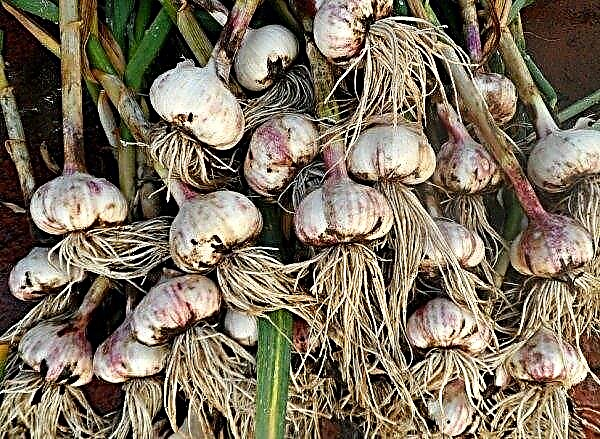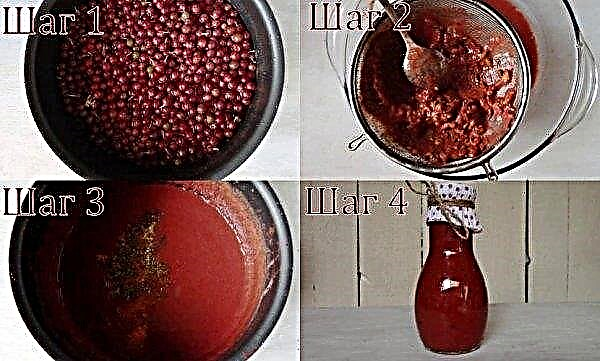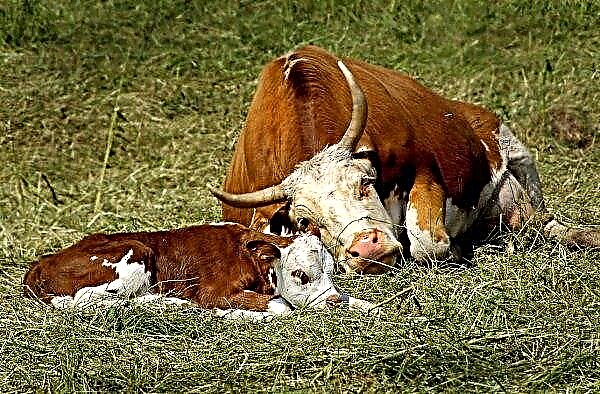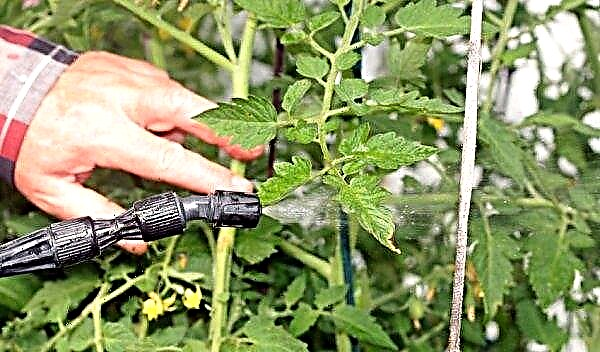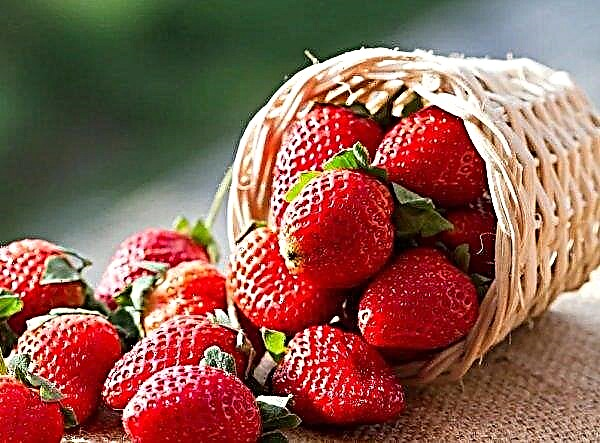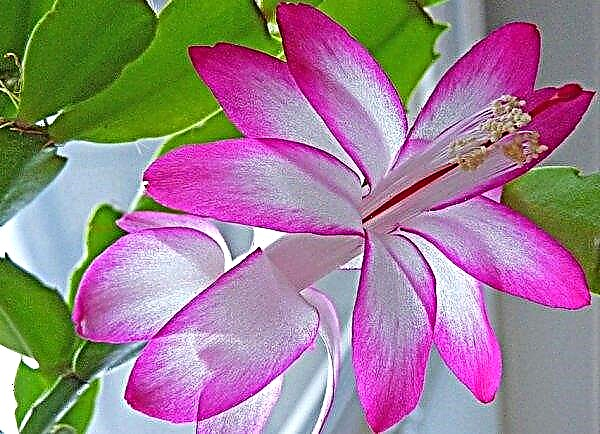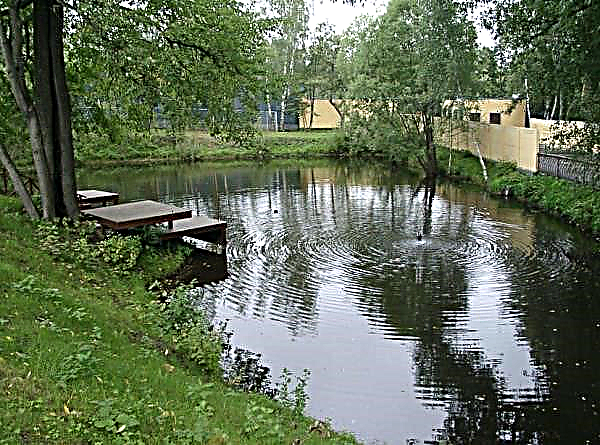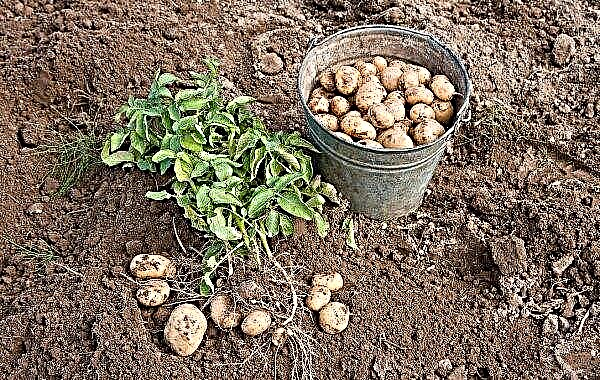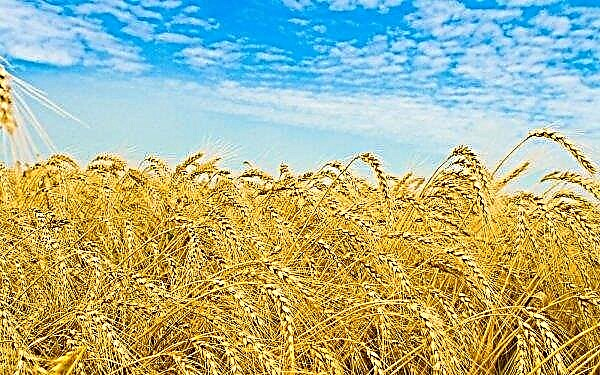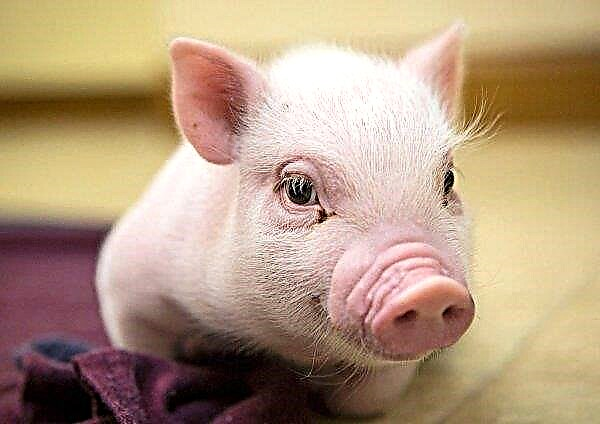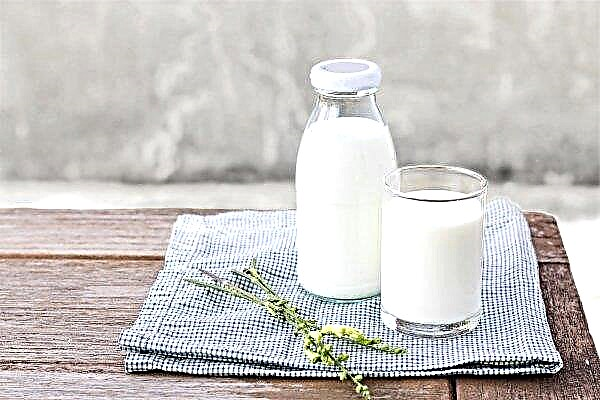Pear is considered one of the leading fruit crops, so it is often of particular interest to gardeners. For the cultivation of the Rogneda variety, it is recommended that you familiarize yourself with its description in more detail, as well as with the features of tree care and storage methods.
History of the variety
The Rogneda pear (Pink family) is an early autumn variety, the result of crossbreeding of such varieties as Toma and Forest Beauty.
The variety was tested at the Moscow Agricultural Academy named after K.A. Timiryazev since 1987, and since 2001 have been included in the State Register. Initially, it was bred for cultivation in the Central, North-West and Volga-Vyatka regions. With the development of gardening, it gained further distribution.
Did you know? Today, the pear has more than a thousand varieties.
Appearance of the tree and description of the fruit
The tree is able to reach a height of 4 m. It has a rounded, sometimes ellipsoidal crown. On the branches grow oval leaves of dark green color, having notches at the end. The buds are cone-shaped and short. The fruiting of a fruit tree occurs in 3-4 years of life. Fruits are small in size, their weight is 120-140 g. The fruit has a pear-shaped and glossy yellow peel. Inside, it consists of a white flesh that has a sweet and sour taste. Its juicy texture with a pronounced pleasant aroma is distinguished by spicy notes of muscat.
The fruiting of a fruit tree occurs in 3-4 years of life. Fruits are small in size, their weight is 120-140 g. The fruit has a pear-shaped and glossy yellow peel. Inside, it consists of a white flesh that has a sweet and sour taste. Its juicy texture with a pronounced pleasant aroma is distinguished by spicy notes of muscat.
Rogneda bears fruit annually and has a positive yield dynamics. The average life span of a tree is 70 years.
Detailed feature
The productivity of the pear variety in question reaches 140 kg / ha. From one adult tree per season, you can collect up to 50 kg of the crop. Flowering occurs in medium terms. Flowers are resistant to spring temperature drops.
Despite the fact that the variety is self-fertile, it is worth planting 2-3 pollinators near a tree, which will increase the yield and quality of fruits. Such varieties are suitable for this: Chizhovskaya, Vidnaya and Pamyat Anzina.
Fruit tree is able to tolerate sharp changes in temperature. The variety is resistant to diseases such as scab and fruit rot.
Agrotechnics growing and care
To get a good pear crop, you must adhere to the rules described below - choosing the optimal timing and place of planting, the frequency of watering and fertilizing, pest and disease control, and preparing the tree for wintering.
Optimal timing and landing space
If all the rules of planting and care are followed, you can get a plentiful and healthy crop.
To obtain sweet fruit, young pear seedlings should be planted in a well-lit and well-ventilated area. In the shade, the tree will produce meager harvests.
The timing of planting young trees is affected by the climatic conditions of the location of the future orchard. The most suitable time for planting seedlings is the first half of October. In the spring, planting should be done before the start of sap flow, approximately in the second decade of April.
Important! The variety reacts poorly to moist soil and the proximity of subsoil waters, so young seedlings should be planted at a distance of at least 2.5 m from them.
The acidity of the soil should be in the range of 5.6–6 pH. To reduce this indicator 6-7 days before planting young trees, lime mortar should be added (dissolve 2 cups of lime in 10 liters of warm water). A mixture of organic and mineral fertilizers must be added to a well prepared in advance, namely:
A mixture of organic and mineral fertilizers must be added to a well prepared in advance, namely:
- 20 kg (2 buckets) of humus;
- 20 kg (2 buckets) of sand;
- 800 g of wood ash.
The depth of the hole for planting should be about 80 cm with a diameter of 1–1.2 m. The distance between young seedlings should be at least 2 m.
Frequency of watering and fertilizing
Fruit trees are recommended to be watered by sprinkling or with a special spray. Young seedlings in the season must be irrigated up to 5 times by making 1 bucket of water under the tree. To saturate the root system with moisture and air after each watering, the trunk circle must be loosened.
Irrigation is recommended in the morning or evening. With severe summer drought, a young plant can be sprayed on foliage. Water the tree should be until mid-autumn. It is necessary to fertilize the pear under the root - for this it is recommended to use organic and complex mineral fertilizing. They should be brought in three times a year - during the growing season, flowering, and during the formation of fruits. After this, be sure to mulch the trunk circle of the pear.
It is necessary to fertilize the pear under the root - for this it is recommended to use organic and complex mineral fertilizing. They should be brought in three times a year - during the growing season, flowering, and during the formation of fruits. After this, be sure to mulch the trunk circle of the pear.
Important! Fertilizers that were introduced during planting, the young plant should be enough for several years. After this time, it is recommended to nourish the young garden every year in the autumn, using material based on potassium and phosphorus.
In subsequent years of life, top dressing is applied in accordance with the quality of the soil. If the garden grows on sparse sandy soils, then top dressing should be applied annually.
Pest and Disease Control
Pests and diseases can have a negative impact on the development and quality of the future crop. A neglected form of the disease can lead to the death of a fruit tree.
The Rogned pear is often damaged by the larvae of the pear throat and gall mite.
Control measures:
- To protect the tree from the tartar it is necessary to spray the plant with a solution of Fufanon (at the rate of 10 ml per bucket of water) or Inta-vir (1 tablet per bucket of water) before the buds begin to form.
- For protection against gall tick the orchard should be sprayed 2 times a season with a solution of colloidal sulfur (at the rate of 10 g per bucket of water). The first procedure is carried out before budding, and the second - immediately after flowering.
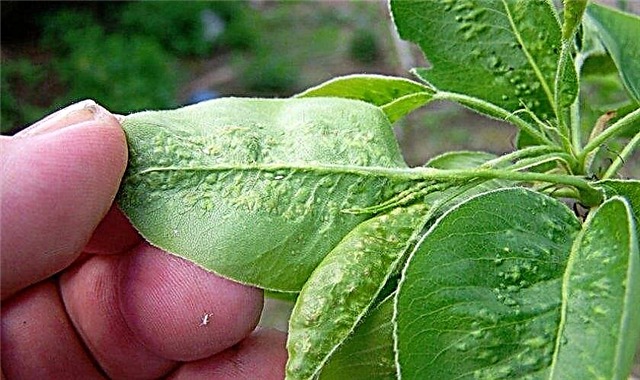

The variety is immune to fruit rot and scab, but experienced gardeners recommend treating the garden with a urea solution at the rate of 0.5 kg per bucket of water as a preventative measure. This procedure is carried out during leaf fall.
Did you know? The biggest pear was managed to grow in 2013 by a resident of the village of Surkhahi, Nazran district, Abas Matiev. The weight of the fetus was 1.7 kg.
Wrapping a tree before winter
The variety perfectly tolerates frosts and therefore does not need additional protection for the winter.
Shelter will be required for young immature plants with a weak root system. Before the onset of frost, you should tidy up the trunk circle, be sure to clear it of weeds, scavengers and broken branches.
In the cleared soil should be put rotted manure or humus and cover everything with a layer of earth. Such a heater will protect young roots from freezing. From the winter attack of rodents, young trees should be tied with coniferous spruce branches, wrapped in burlap or net.
From the winter attack of rodents, young trees should be tied with coniferous spruce branches, wrapped in burlap or net.
Harvesting and storage
In order for a ripped pear to please the consumer for a long time, it must be correctly removed from the tree. In order to avoid fruit falling during ripening, it is recommended to pick them 10 days before the onset of consumer maturity. Harvest should be removed from the tree in late August or in the first ten days of September.
Ripe fruits should be preserved for about 1 month in a cool place. In the refrigerator at a temperature of 0 ° C, pears can be stored for 2-3 months.
During the cultivation of the Rogned pear, it should be remembered that with proper and timely care it will bring a good harvest. It is recommended to choose the right place for planting, to ensure the application of fertilizers and watering to achieve this result.


